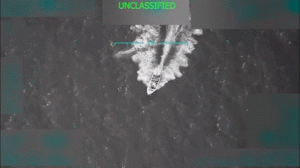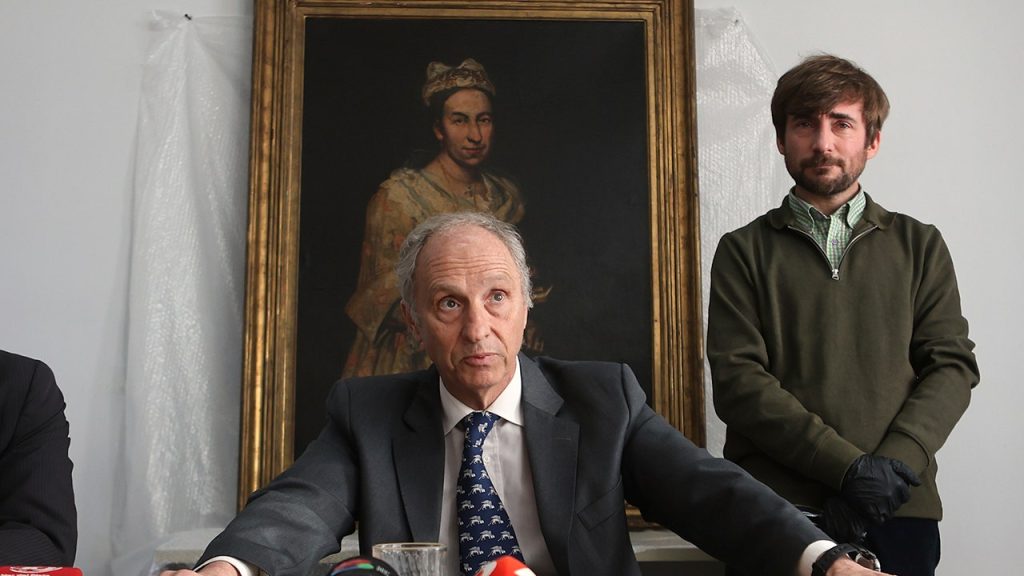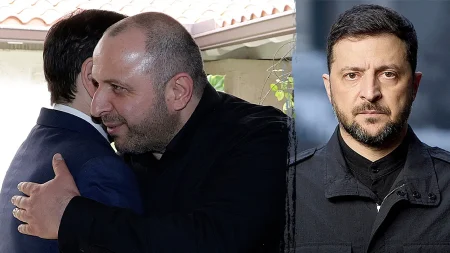Nazi Art Theft Resurfaces in Argentina: A Long-Lost Painting’s Journey to Justice
The recent discovery of an 18th-century Italian painting that vanished during World War II has illuminated the persistent shadows of Nazi looting that continue to affect families across generations. In a remarkable turn of events, Argentine prosecutors have charged Patricia Kadgien, the 59-year-old daughter of Nazi officer Friedrich Kadgien, with attempting to conceal the stolen artwork that had remained hidden from public view for eight decades. The painting, “Portrait of a Lady” by Giuseppe Ghislandi, created around 1710 and valued at approximately $50,000, has finally emerged from obscurity following a chance discovery that reads like a detective novel. This case represents not just the recovery of a valuable artwork, but also stands as a powerful reminder of the human cost of wartime plunder and the ongoing quest for justice for Holocaust victims and their families.
The painting’s journey into hiding began during the Nazi occupation of Europe, when Jacques Goudstikker, a prominent Dutch-Jewish art collector, was forced to flee Amsterdam. Tragically, Goudstikker died in a shipwreck during his escape, leaving behind an extraordinary collection of approximately 1,100 artworks that were subsequently seized by Hermann Göring, one of Hitler’s most powerful lieutenants. For decades, Goudstikker’s heirs have sought to recover these scattered treasures, pieces of their family legacy torn away by the brutality of war and genocide. The search for this particular painting ended unexpectedly when Dutch journalists, investigating Friedrich Kadgien’s post-war life in Argentina, spotted the artwork hanging inconspicuously in his daughter’s living room – captured in an online real estate listing. This fortuitous discovery demonstrates how modern technology and investigative journalism can sometimes shine light into the darkest corners of history.
Following the Dutch media report, Argentine authorities moved swiftly, raiding Patricia Kadgien’s home in Mar del Plata and other properties connected to her family. While the Ghislandi painting was not immediately found, police discovered weapons and additional artworks suspected to have been looted during World War II. Patricia and her husband Juan Carlos Cortegoso, 62, were initially placed under house arrest. In a dramatic development, the couple surrendered the painting to authorities the following day, perhaps recognizing the mounting legal pressure and international attention. After a court hearing, they were released from house arrest but remain prohibited from leaving Argentina and must inform authorities of any change in their residence. The case raises profound questions about responsibility, complicity, and what obligations the children of war criminals have regarding ill-gotten gains they inherit.
While the painting’s recovery represents a significant victory for historical justice, many questions remain unanswered. Investigators have not yet determined exactly how Friedrich Kadgien, who died in Argentina in 1978 after escaping justice for his wartime activities, came to possess the artwork. Did he steal it directly? Was it given to him by superiors? Or did he acquire it through the black market that thrived in the chaos of post-war Europe? What we do know is that Marei von Saher, Jacques Goudstikker’s heir, has reportedly filed a legal claim through the FBI’s New York office to reclaim this piece of her family’s stolen heritage. Federal prosecutor Daniel Adler emphasized the importance of making the recovered artwork visible to the public, acknowledging the community’s role in its discovery. The painting now sits at a crossroads, its future ownership to be determined through legal channels that will weigh historical injustice against the complexities of international law.
The attempted concealment of the painting by Patricia Kadgien reveals the uncomfortable legacy that descendants of Nazi officials continue to navigate. Court records indicate that shortly before the painting was surrendered, the defendants’ lawyer unsuccessfully attempted to secure authorization to auction the artwork through a civil court. This suggests an awareness of the painting’s problematic provenance and perhaps an attempt to convert it to cash before legal complications could arise. The case exemplifies how the consequences of World War II continue to reverberate through subsequent generations, creating moral and legal dilemmas for those who inherit not just physical objects, but also the weight of historical wrongdoing. For families like the Kadgiens, the past is not simply history—it manifests in tangible assets that connect them directly to crimes committed before they were born.
The recovery of this single painting, while significant, represents only a tiny fraction of the estimated millions of cultural items looted during the Nazi era. Jacques Goudstikker’s descendants continue their decades-long quest to recover approximately 1,100 paintings from his collection, joining countless other families engaged in similar struggles worldwide. Each recovered artwork represents not merely a financial asset but a piece of cultural heritage and family memory restored. As this particular painting begins its journey toward rightful ownership, it serves as a powerful reminder that the pursuit of justice has no expiration date. The international community’s commitment to rectifying these historical wrongs, even eight decades after they occurred, demonstrates a collective understanding that healing the wounds of history requires both acknowledgment of past injustices and concrete action to address them. In the delicate brushstrokes of Giuseppe Ghislandi’s “Portrait of a Lady,” we find not just artistic beauty, but also a compelling symbol of humanity’s ongoing struggle to confront its darkest chapters and make whatever amends remain possible.















